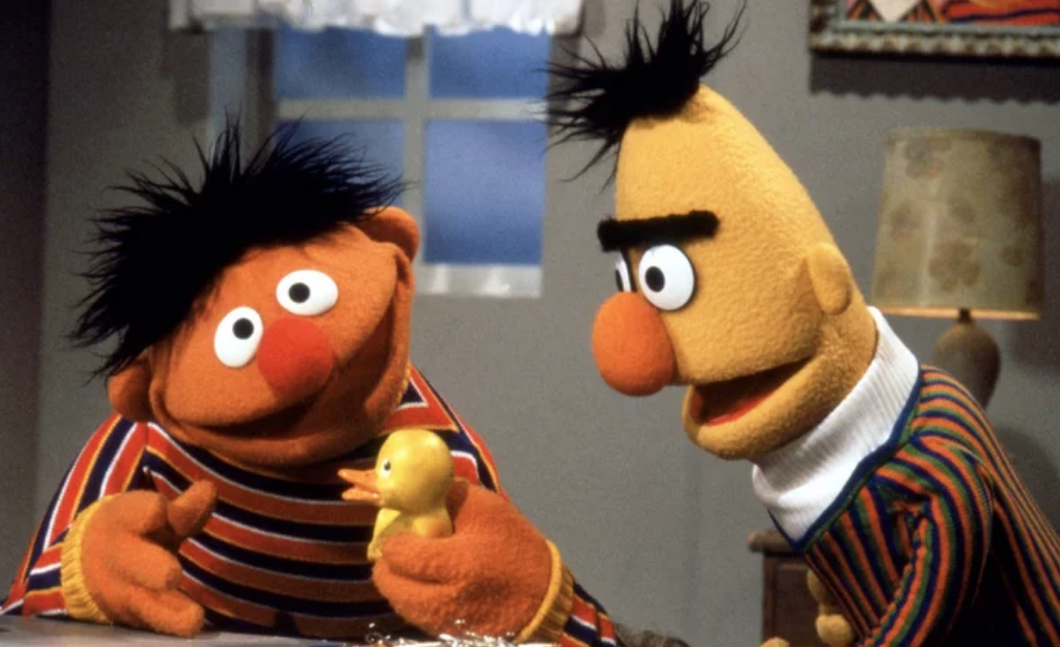It's been a multi-decade argument over the sexual orientation of "Sesame Street" puppets, roommates, and possible gay-lovers Bert and Ernie. In 1994, the New York Times weighed in on the situation asking, "How long have you been preoccupied with the sex lives of puppets?" In 2011, the debate erupted once more as approximately 11,000 supporters signed a petition that begged "Sesame Street" to have the couple get married. In 2013, Bert and Ernie began to symbolize gay rights as they were featured on the cover of "The New Yorker."
And, recently, on Sunday evening, former "Sesame Street" writer, Mark Saltzman, told online LGBT magazine Queerty, that, to him, the duo is a gay pair that closely replicates his personal romantic relationship with his late partner Arnold Glassman.
Sesame Workshop quickly negated the comment and, at first, I was furious that the influential show denied these claims. What's wrong with being gay? Nothing! If the show were to relay this pro-gay message, imagine how many queer-children would feel included, safe, and loved?
But, Sesame Workshop agrees with social justice ideals: "Sesame Street has always stood for inclusion and acceptance. It's a place where people of all cultures and backgrounds are welcome. Bert and Ernie were created to be best friends, and to teach young children that people can get along with those who are very different from themselves."
Thus, I realized, there's a bigger picture to highlight rather than if the puppets are gay or not.
These puppets aren't humans, they are utilized to help a variety of people identify and learn from them. The headquarters of "Sesame Street" made it clear that officially Bert and Ernie are only puppets that act as friends:
The "Sesame Street" characters were created to help children find their place as each puppet reveals unique characteristics from quiet to outgoing, anxious to confident, and grumpy to amiable. Whomever the audience, a link between the audience member and the puppet can be generated. Yet, each association is personal and unlike any that of any other. In this manner, it's not fair-minded, or just, to restrict each character as gay, straight, bisexual, asexual, etc. For every individual spectator, these characters will be a little different.
For instance, my big brother, who happens to be gay, was in awe of Bert as a child. According to my mom, Bert had a very similar personality to the younger version of my brother. So, to my mismatched brother who grew up feeling like the odd one out, Bernie was gay–but that was was my brother's personal connection to the character rather than the true nature of Bernie the puppet. It was my brother identifying with a character to become more comfortable with himself. However, others saw it fit to call Bert and Ernie brothers or best friends depending on their individual situations:
Conclusively, the original creator of Bert, Frank Oz, claims that all these arguments don't matter and that "there's so much more to a human being than just straightness or gayness" and the famous pair, Bert and Ernie, broadcast an image of love, acceptance, and care–no matter if you see it through the lens of a gay pair, best friends, brothers, or any other partnership. To Mr. Saltzman, he "didn't have any other way to contextualize them... but as a loving couple," but he wasn't defining the couple for others. These puppets weren't created to have strict sexual orientations. Instead, it's up to the individual, whether pre-schooler or older, to decide what each character represents for him or her.
Mr. Saltzman clearly summarizes the circumstance with, "It's like poetry... It's what you need it to be."






 The minimum wage is not a living wage.
StableDiffusion
The minimum wage is not a living wage.
StableDiffusion
 influential nations
StableDiffusion
influential nations
StableDiffusion











